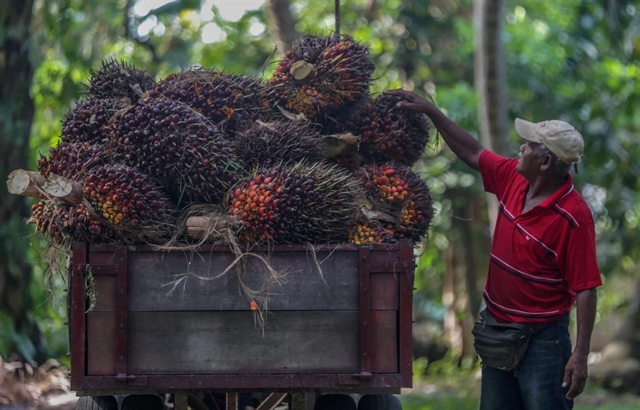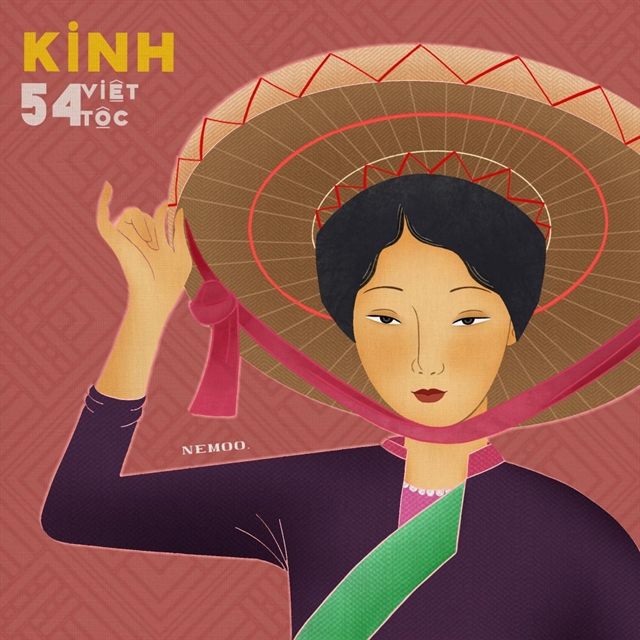 Features
Features

A new fashion collection in Hà Nội shines a light on lotus silk and Việt Nam's national flower
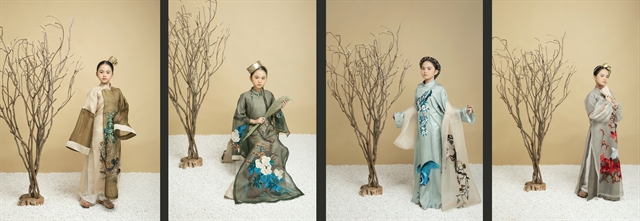
|
| AS ONE: The new áo dài collection is inspired by the strenuous work involved in making lotus fabric. Photo by Kiếng Cận |
by Nguyễn Mỹ Hà
The year 2020 will go down in history for a host of reasons, one being that the COVID-19 pandemic shut borders that had long been open wide for trade.
Việt Nam’s garment and textile exports fell to US$35 billion. The sector as a whole, though, still managed to post a profit amid all the doom and gloom — significant in an industry that employs 2.8 million Vietnamese.
Grim outlook
“2021 may be no brighter,” Lê Tiến Trường, chairman of the Việt Nam National Textile and Garment Group (Vinatex), told Sunday Việt Nam News ahead of the group’s year-end conference in Huế.
“Overall global demand for garment and textile products will decline from an estimated $740 billion to $600 billion. Fashion companies will see profit fall by 93 per cent,” Trường said.
“Under such trends, the ‘best case’ scenario is for overall revenues to reach 2019 levels by the third quarter of 2022, while the ‘worst-case’ is that level being reached by the last quarter of 2023."
“More broadly, Việt Nam’s garment and textile sector expects to grow between 8 and 11 per cent this year and meet the targeted $39 billion in exports, which is back to the 2019 figure, if the world is not placed on lockdown.”
He went on to say that "the current fashion trend is in favour of casual outfits at a lower or cheaper price."
"If you are a garment company that doesn’t export or doesn’t make casual wear for a massive customer base, your future will be one of survival."
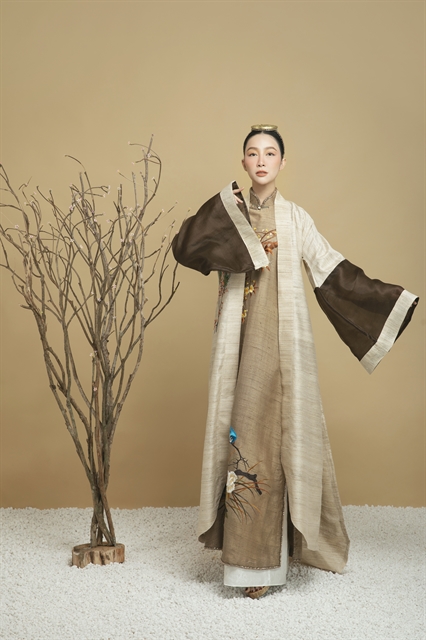
|
| STYLE IN DESIGN: Model Linh Nga shows the subtle beauty of lotus silk. Vũ Việt Hà’s designs take the iconic robe worn by millions of Vietnamese women to a new level. Photo by Kiếng Cận |
Aspire to thrive
Amid the cancellation of a host of fashion shows and with fashion houses closing down and modelling contracts disappearing, one Hà Nội-based designer decided to spend three months and quite a sum of money on a new collection using high-quality fabric made from lotus stems.
The first fashion designer to use lotus silk in a collection, Vũ Việt Hà, who has made his signature áo dài for prominent artists and diplomats in Việt Nam, such as singers Tùng Dương and Kyo York, among others, felt he must do his best to bring out the beauty and luxury of the fabric.
“I fell in love with this special, delicate material when I went to Phùng Xá Village in the craft-rich land of an outlying district, west of Hà Nội,” Hà told Sunday Việt Nam News.
“I use silk and raw cotton to highlight the special features of the lotus fabric.”
Fabric experts say silk is very refined, soft and smooth, whereas lotus fabric can be rough and not as comfortable.
But Việt Hà said he’s so fascinated by the exquisite fabric that he decided to launch a special collection to take lotus silk to the next level.
Lotus silk has been crafted in Việt Nam for the last 10 years.
“Its standout feature is it can stretch, and while the surface looks slightly rough it feels soft and retains a light scent of lotus,” he said.
“The downside is that it also stretches when hung on an embroidery frame, twisting the design.”
So he came up with a solution to provide more silk lining for the gowns he makes. For some designs, he must use three or even four layers of silk lining.
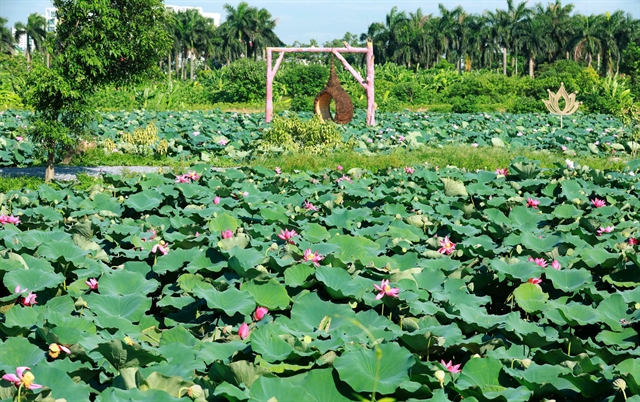
|
| ON WATER: A lotus pond in Hà Nội provides a green space and eases the heat during the city’s summer. VNS Photo Trương Vị |
Most expensive fabric
The images of lotus flowers, leaves and buds are found in pagodas and temples all around Việt Nam.
A popular Vietnamese verse, which is in school textbooks, goes:
“Trong đầm gì đẹp bằng sen, lá xanh bông trắng lại chen nhị vàng
Nhị vàng bông trắng, lá xanh, gần bùn mà chẳng hôi tanh mùi bùn.”
(Roughly translated as “There’s nothing more beautiful than a white lotus flower rising from the pond, with yellow pistil, white petals and green leaves,
"It grows from the muddy water, but is not tainted by the odour.”)
The lotus represents the purity of a sacred soul, which cannot be spoiled by its surroundings. It is also used to teach young children and even adults to overcome challenges in life while maintaining their dignity.
It truly is the much-loved national flower of Việt Nam, from the Plain of Reeds in the Mekong Delta, where miles and miles of lotus grow in marshlands, to small ponds nestled among rice fields that offer both beauty and a full harvest.
In the heart of Hà Nội, the hundred-petal lotuses grown on family-owned segments of West Lake create a beautiful summer landscape. These families also provide lotus flowers that make the best and most precious lotus-scented tea in the city.
Historical documents reveal that lotus silk was at one time only grown at Inle Lake in Myanmar and Siem Reap in Cambodia, where it was used to make special robes for Buddha statues, called lotus robes.
Now a traditional silk weaver from Hà Nội, Phan Thị Thuận was the first craftswoman to make lotus silk in Việt Nam, adding herself to a small list of lotus silk makers around the world.
Most of the process is done by hand, from picking the stems to pulling out the thin fibre.
In order to have a metre of lotus silk, an artisan must use more than 11,000 lotus stems while craftswomen require hundreds of hours at work. One square metre costs VNĐ30 million (US$1,300), or the equal of a garment worker’s salary for three months.
The natural colour of lotus silk is a shade of ivory. Madame Thuận also uses natural leaves to dye it, but each time the final batch exudes a slightly different colour, which means you can’t have two batches with the same colour dye.
“It drives me crazy,” said the owner of an embroidery house that provides embroidered scarfs, traditional long robes, áo dài (Việt Nam’s national dress), and other hand-made items. “Sometimes I have to wait for months to have two metres of lotus silk to make a scarf!”
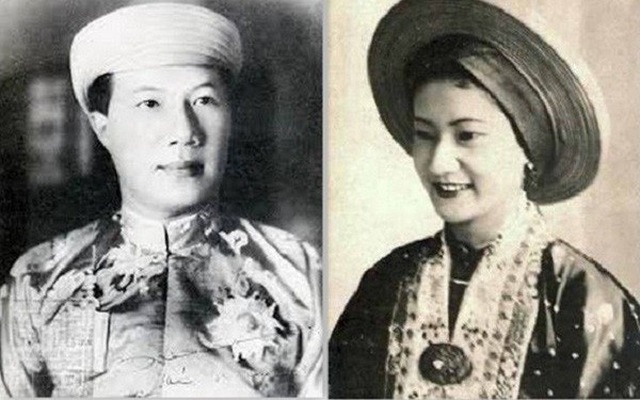
|
| OF THE TIMES: Queen Nam Phương (right) in a traditional royal robe during her wedding to Việt Nam’s last emperor, Bảo Đại (left), in 1934. The 1930s style of áo dài inspired this lotus silk collection. Photos courtesy of the Thừa Thiên-Huế Museum |
But Hà doesn’t see an issue. “My customers are familiar with the fabric, so they actually prefer that it is always unique in colour,” he said. “They don’t mind if the two flaps of their áo dài are slightly different shades, as this proves the exquisiteness of their unique style.”
Bridging the past and future
“I’ve been wondering how to best preserve Việt Nam’s weaving tradition,” Hà said. “I believe I am the ‘fabric knot’ that connects the past and the future of fashion.
“I spent all of my savings on this collection, making robes for a mother and her eight-year-old daughter with all my heart and soul.
“I believe that the finest quality of this fabric — the luxurious use of natural resources — is a treasure in our heritage of growing and cultivating lotus and teaching our children about overcoming challenges in life while keeping their own values.”
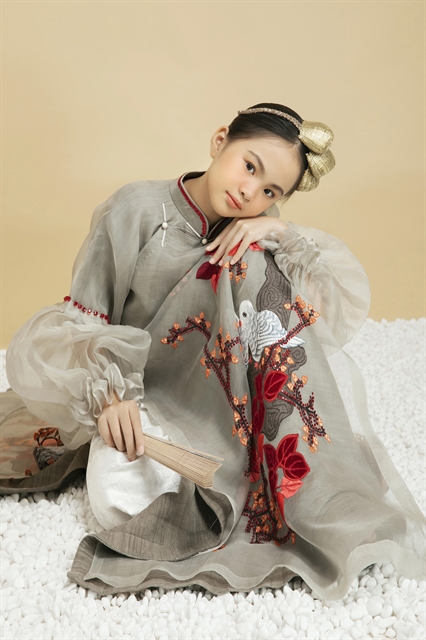
|
| NEXT IN LINE: Eight-year-old model Minh Thảo represents the future generation of Vietnamese: integrated into the world while maintaining her roots and traditions. Photo Kiếng Cận |
Hà has been fascinated by the style of long robes Vietnamese women wore in the 1930s. Redesigned and created by painter Le Mur in Hà Nội, a trend began that continues to this day.
The utmost care has been taken in creating the collection and he sews all of the important details by hand.
“I attached the buttons to the robe, giving it the attention needed,” he recalled. “I fell asleep while working on it many times, but when it was completed, I felt my mission had been accomplished.” VNS
Models: Linh Nga and Minh Thảo
Make-up: Quân Pu
Photographer: Kiếng Cận



